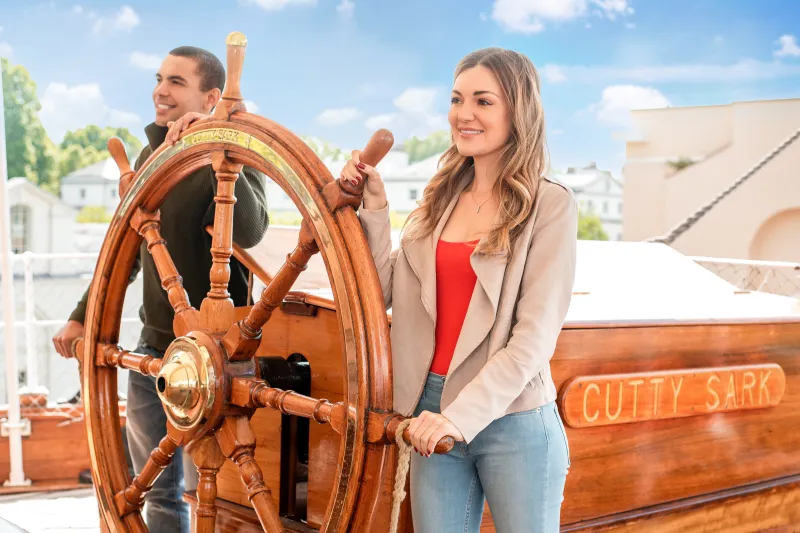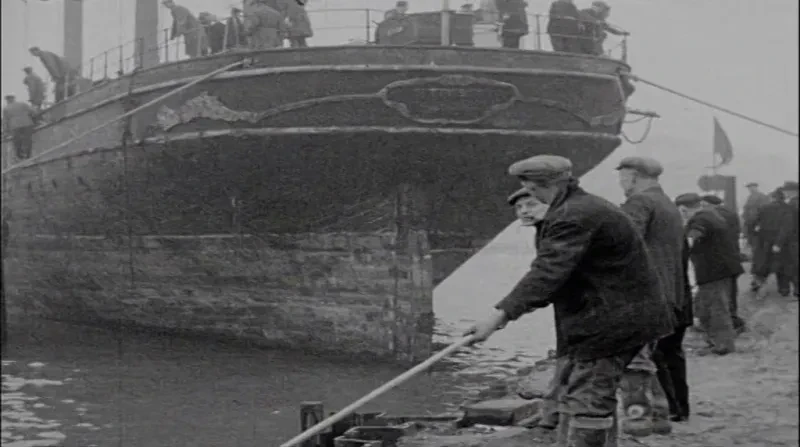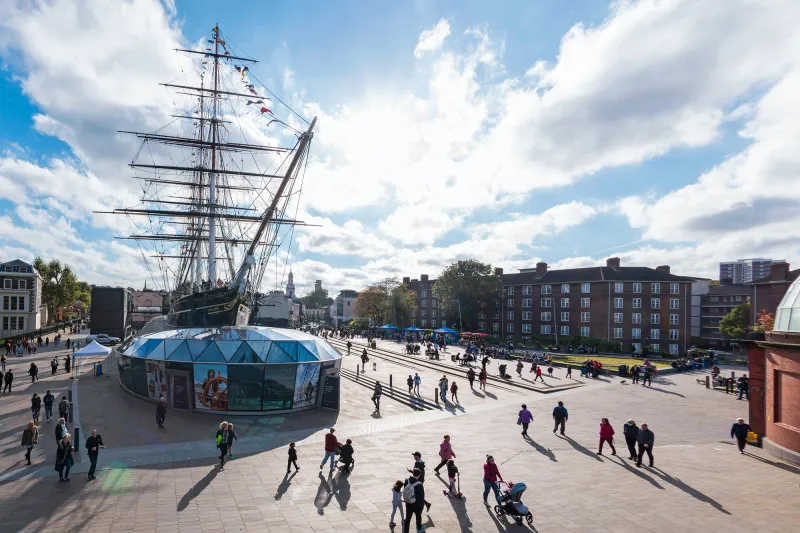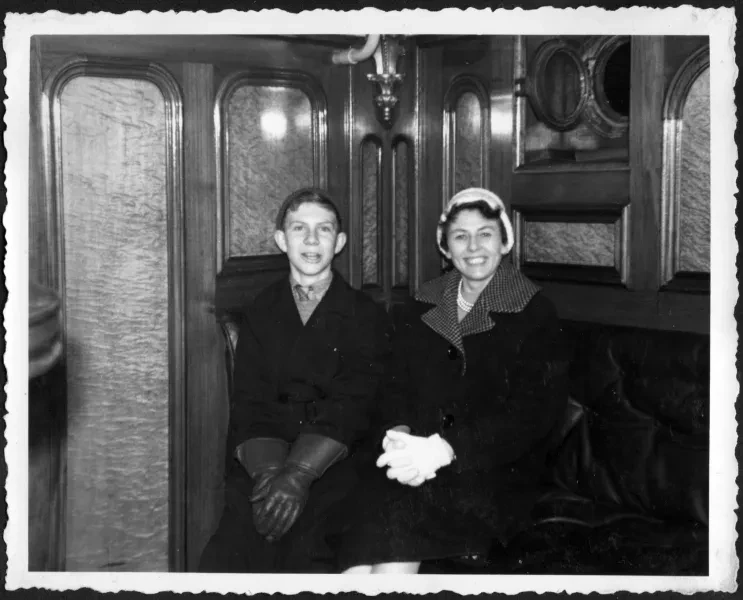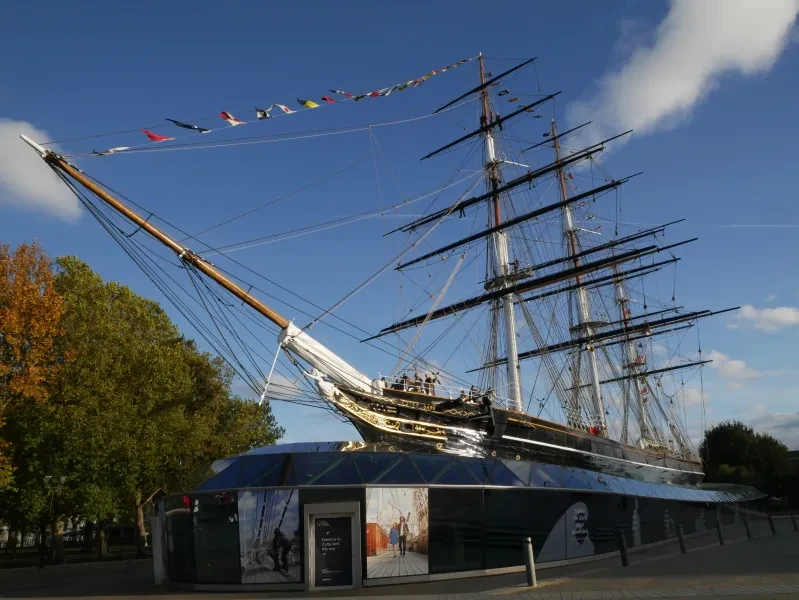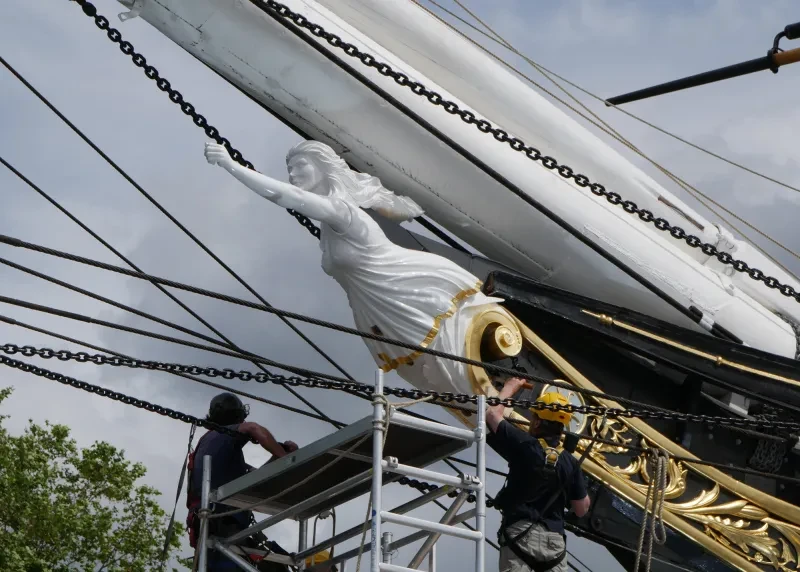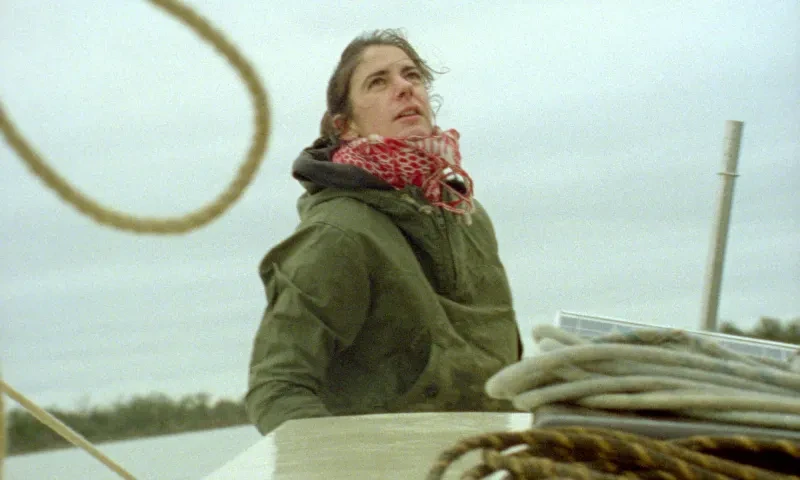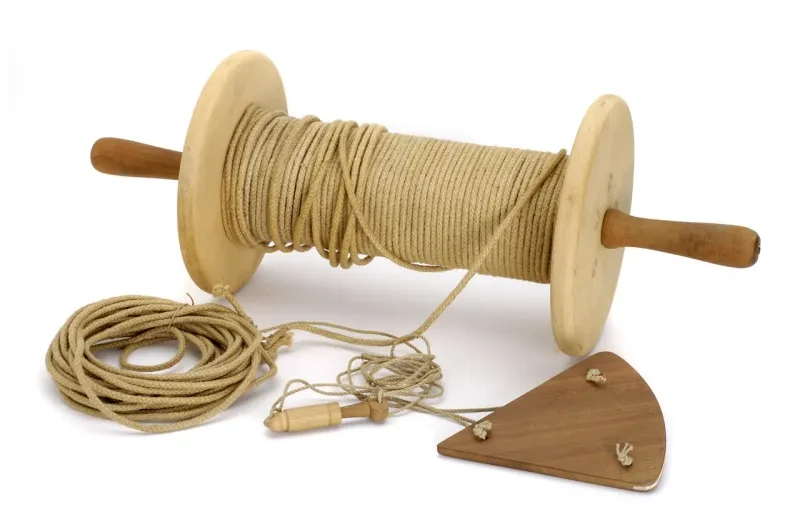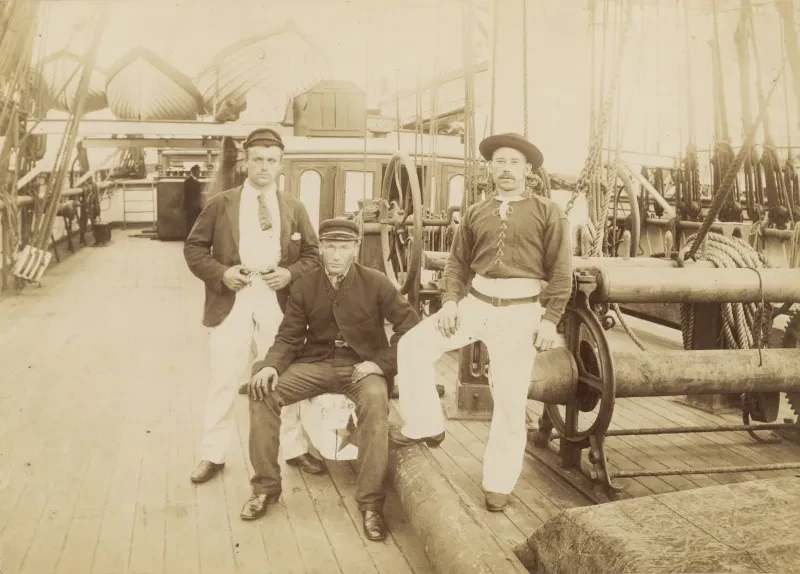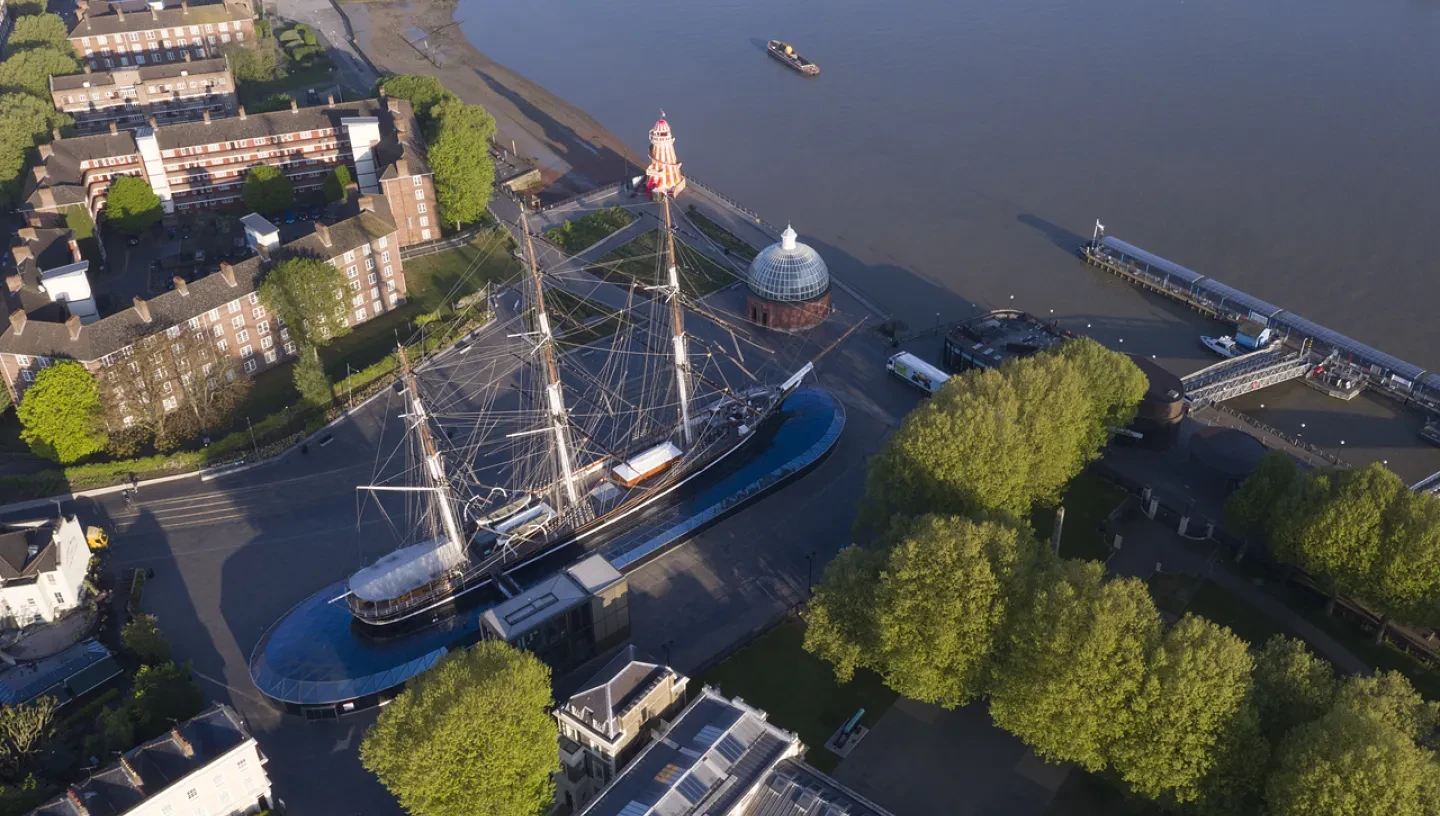
On 10 December 1954 Cutty Sark slipped into a specially built dry dock in Greenwich.
The ship hadn’t been built in Greenwich. It had never even docked here during its working life. So how did it end up here?
Curator Louise Macfarlane charts the story of how Cutty Sark was saved from the waves – and came to call Greenwich home.
From wreck to restoration
Between 1870 and 1922, Cutty Sark transported thousands of tons of goods all over the world, first as a British clipper and later as the Portuguese vessel Ferreira.
Its career was often characterised by lucky escapes: the Suez Canal forced it from the tea trade for which it had been built, yet it thrived as a cargo ship bringing Australian wool to the UK. In 1906 it survived a hurricane in Florida which killed 134 people. Then, in 1916, it was laid up for over two years after nearly sinking off the coast of South Africa (however, this meant it avoided the threat of German U-boats). And there were countless other occasions when the perils of the seas were overcome. Its journey to Greenwich was no different.
On its penultimate voyage as Ferreira, the ship was damaged in a storm and had to call into Falmouth for repairs. It happened to be in the right place at the right time.
Despite its sorry and unfamiliar appearance, retired local sea captain Wilfred Dowman spotted the famous ship and vowed to bring it back to Britain.
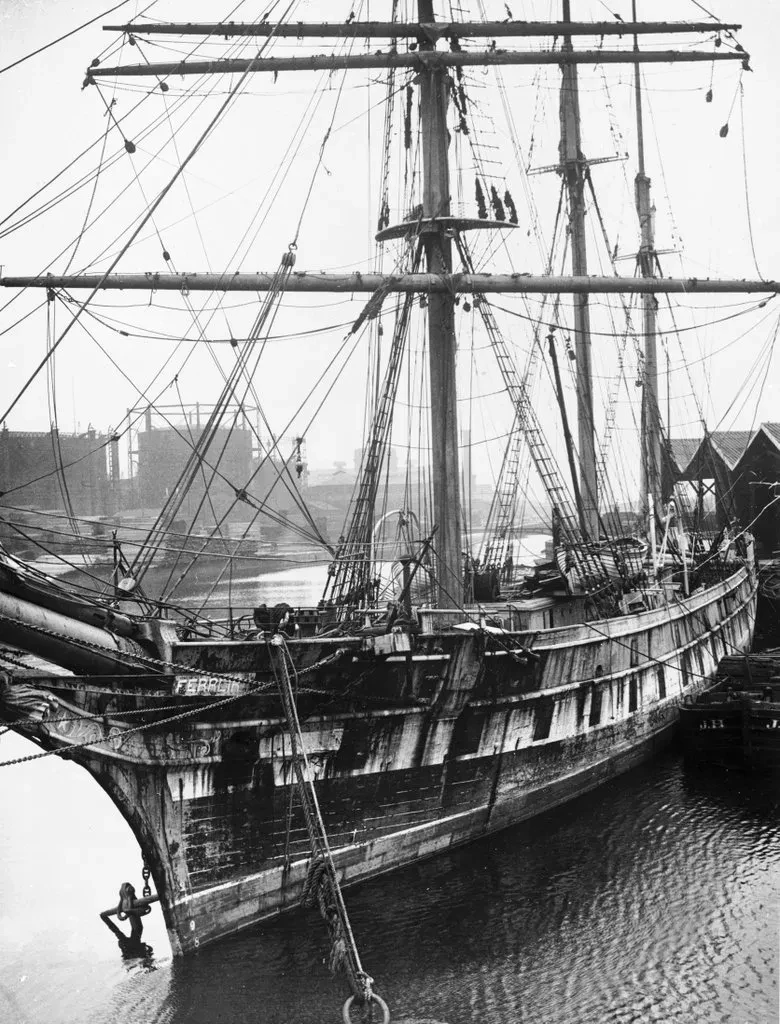
Cutty Sark, then known as the Ferreira, photographed in London's Surrey Docks during a refit in 1921.
Twenty-seven years previously, Dowman had been an apprentice on board the sailing ship Hawksdale when Cutty Sark surged past, leaving a lasting impression on the young man. With the support of his wife Catharine, they paid over the odds to return, restore and rename the ship Cutty Sark.
Clipper ships were not expected to last beyond 30 years, and so without the Dowmans there can be little doubt that Cutty Sark's future would have looked bleak. Thanks to their support, in 1924 it was opened as a cadet training ship and visitor attraction.
An uncertain future
Wilfred Dowman’s premature death in 1936 brought about Cutty Sark’s next move. Catharine Dowman ‘sold’ the ship to the Incorporated Thames Nautical College at Greenhithe for just ten shillings, donating a further £5,000 for its upkeep at the same time. It was to act alongside HMS Worcester as a training ship for boys seeking careers in the Royal and Merchant Navies.
However, the outbreak of the Second World War meant that the cadets were soon moved ashore and Cutty Sark began to fall into disrepair. After the war, the College acquired a new ship and Cutty Sark was no longer needed.
In 1949, the College offered Cutty Sark to the National Maritime Museum, which was unable to take it on. In the same year, HMS Implacable, a ship which had served in the Battle of Trafalgar in 1805, was scuttled (or deliberately sunk) despite vocal opposition.
In recognition of Implacable's significance, the London County Council had offered it a site in Greenwich as a permanent home, but the costs of restoration were deemed too steep in post-war Britain. Instead its figurehead and stern decoration were removed (and are now displayed at the National Maritime Museum) before the ship was consigned to the sea.

HMS Implacable's stern carvings on display at the National Maritime Museum.
A final home for Cutty Sark?
Frank Carr, the Director of the National Maritime Museum, was determined that the same fate would not befall Cutty Sark.
He convinced the Council to survey the ship, which revealed it could survive if it were to be restored and installed in a dry dock – in much the same fashion as HMS Victory in Portsmouth.
The problem was, there was no money to pay for it.
Soon after, Cutty Sark was anchored near Deptford as part of the Festival of Britain to gauge public interest. It prompted HRH The Duke of Edinburgh to establish an informal committee to assess the feasibility of preserving the ship via a public appeal.
The London County Council agreed that, should the appeal be successful, the site in Greenwich originally promised to Implacable could be Cutty Sark’s for free.
Implacable’s loss would become Cutty Sark’s gain.
Preparing for the last voyage
The Cutty Sark Preservation Society, established from the informal committee, launched a public appeal for £250,000 (around £9 million today).
In February 1954 Cutty Sark was towed by two tugs to East India Docks, where its topmasts, deckhouses and rigging were removed to minimise risk when making its final voyage to Greenwich. It was a fitting location. Cutty Sark had loaded and unloaded most of its cargoes at East India Docks during its working career.
In the same month, Sir Robert McAlpine & Sons began work on a dry dock in Greenwich. The position selected involved the demolition of 13 homes and the relocation of many residents. The introduction of the historic ship to the area may not have been universally popular.
Cutty Sark arrives in Greenwich
On 10 December 1954 Cutty Sark was floated into its purpose-built dock on a high tide.
A temporary channel had been cut into the Thames wall, and the ship was carefully manoeuvred into the dock with just 45cm under its keel. The water drained away with the tide and the entrance was quickly sealed.
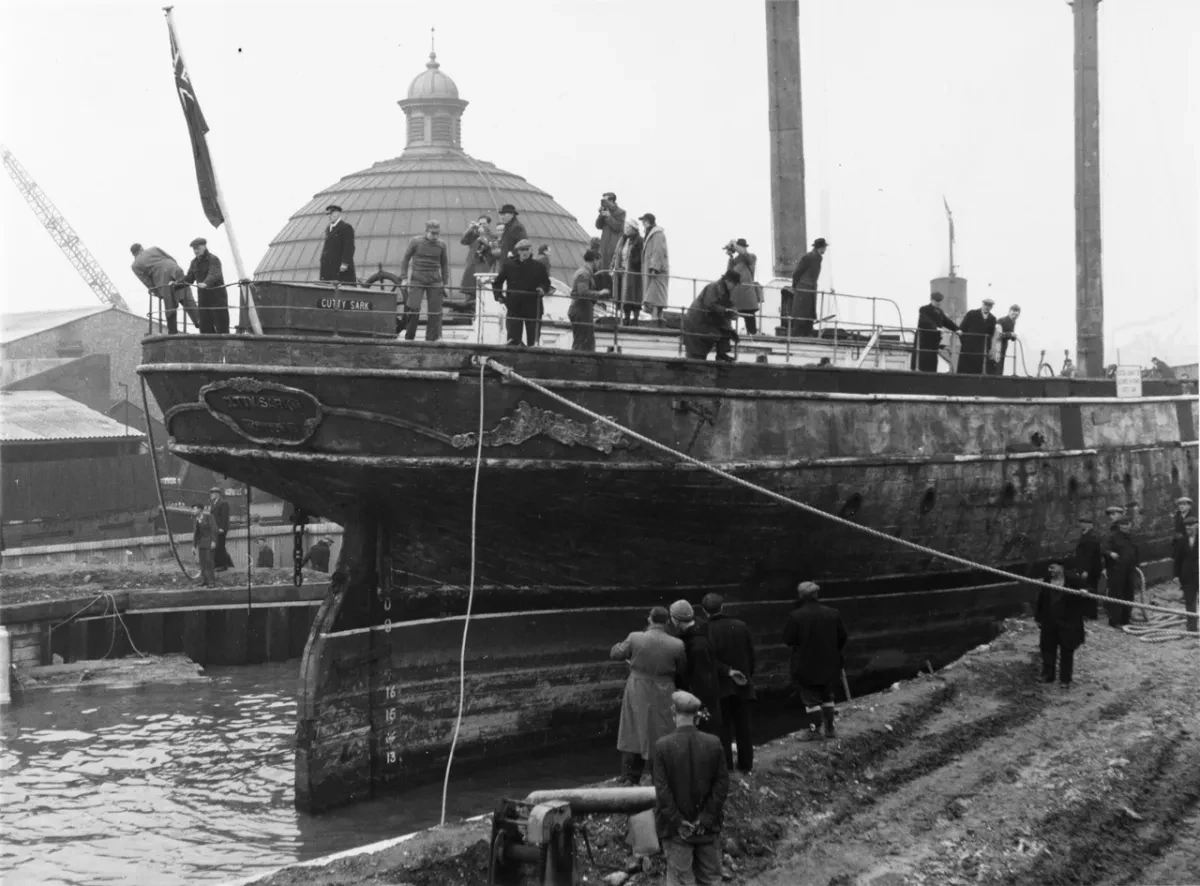
Cutty Sark floating into Greenwich dry dock, 10 December 1954.
Cast into the concrete of the dock walls was a memorial wreath – by sculptor Maurice Lambert – and two inscriptions representing the Cutty Sark Preservation Society’s desire that the ship act as a memorial to the days of sail and the Merchant Navy.
And so it was that the sole surviving tea clipper in the world found its final home in Maritime Greenwich, a short distance from where it had once loaded and unloaded its cargoes. After extensive restoration, Cutty Sark was opened to the public by HM The Queen in 1957.

